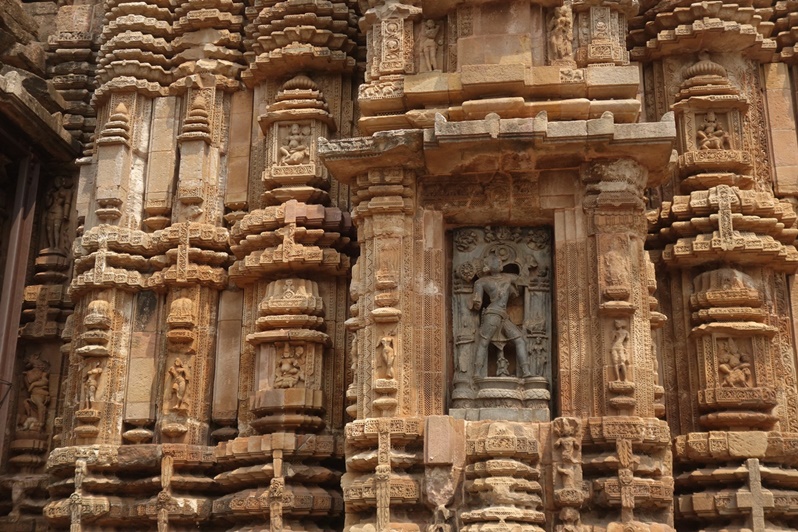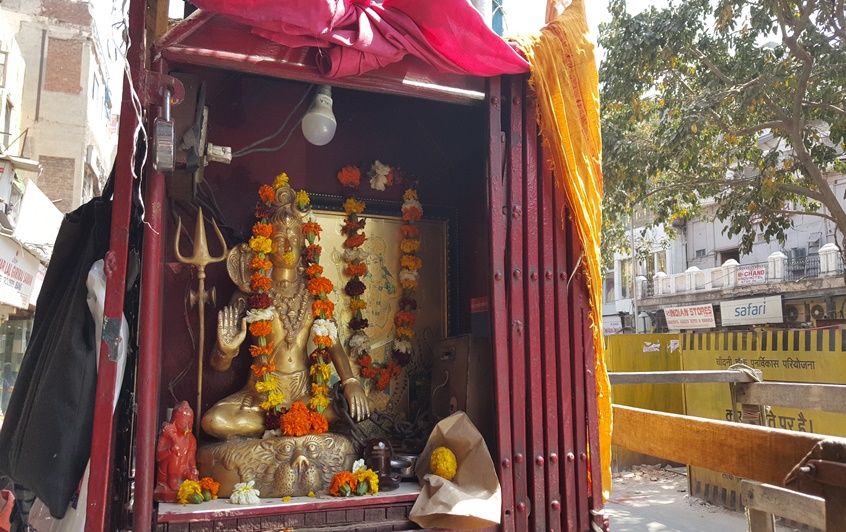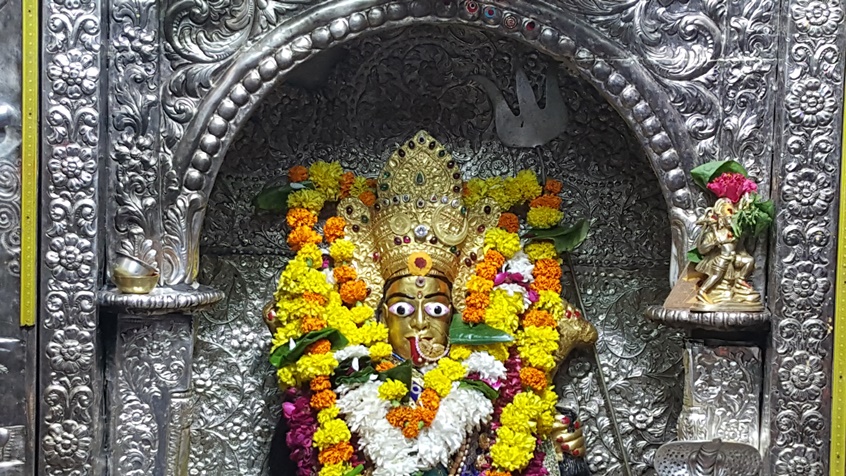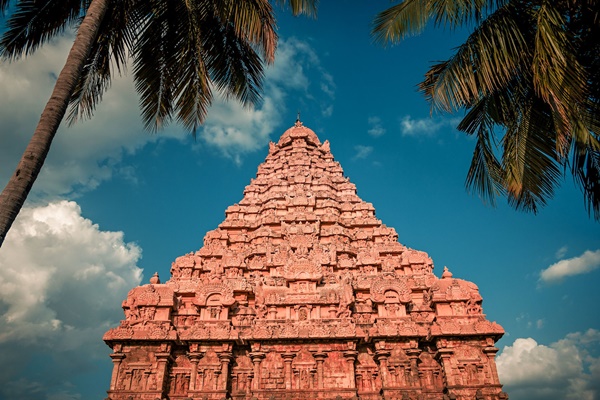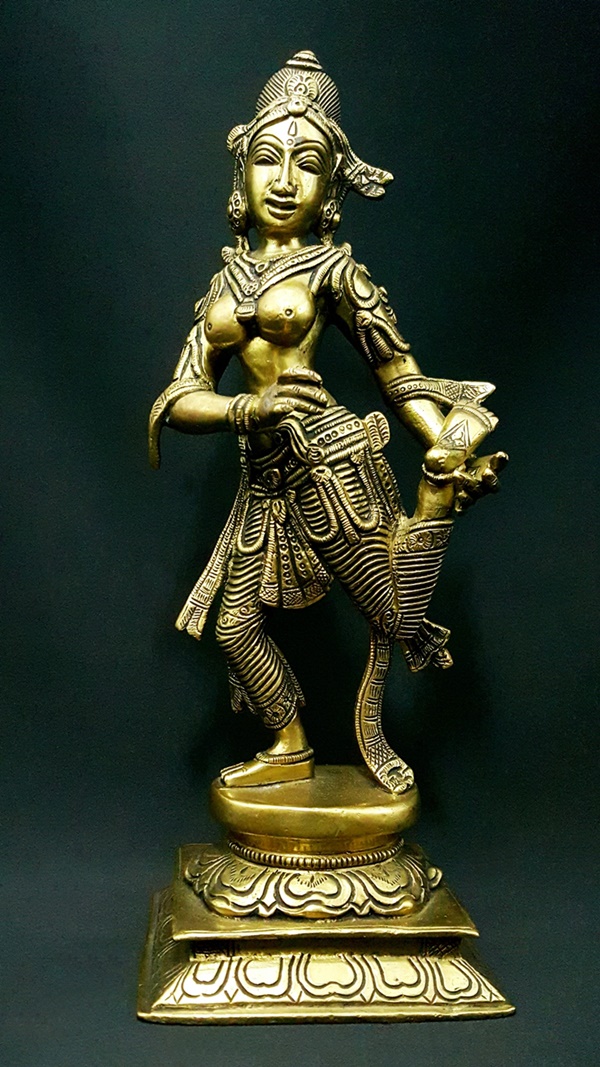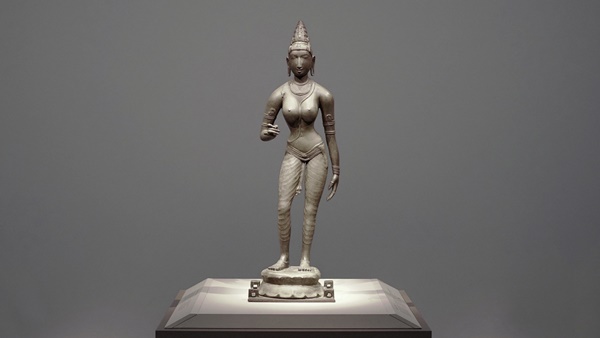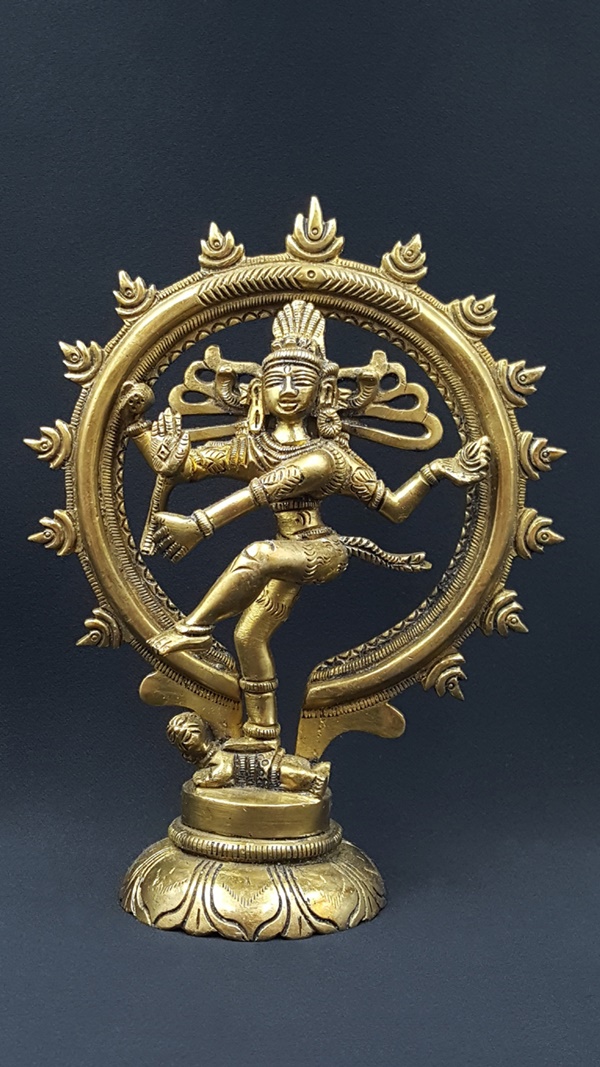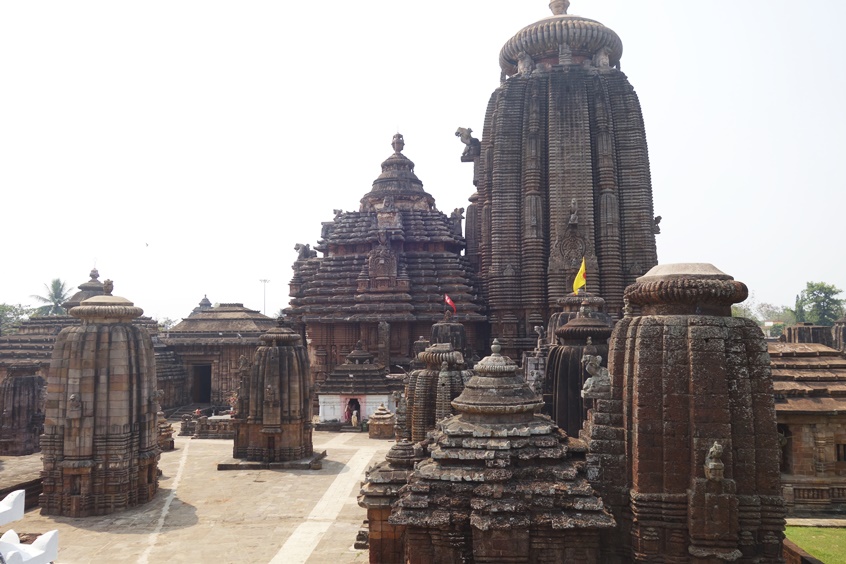
par Bertrand Bellaize, le 29 décembre 2021
Hindouisme : Art indien sous le règne des Chola
La dynastie Chola connaît une période faste du 1° au 3° avant Jésus Christ où sa présence s’étend jusqu’à Ceylan avant de sombrer dans l’anonymat pendant des siècles et son repli sur son territoire d’origine (Uraiyur- bassin de rivière Kaveri) jusqu’à son nouvel essor marqué par sa victoire sur les Pallava en 887 (dynastie qui domina l’Inde du Sud du 4° au 9° siècle après J.-C : elle est notamment connue pour avoir édifié le magnifique et imposant ensemble de monuments à Mahaballipuram (taillés dans le granit)).
Les Chola, au pouvoir du 9° au 13° dans le sud de l’inde
Les Chola étaient originellement installés à Tanjore (dans l’actuel Tamil Nadu) du 9° au 11° siècle puis la capitale se déplaça à Gangaikondacholapuram, cité royale construite au moment de l’apogée des Cholas sous le règne de Rajendra I pour fêter la victoire sur les Pala du Bengale et les royaumes des Gangas de l’est. Le royaume s’étend alors du Sri Lanka jusqu’au Bengale, en passant par le Kerala, le Karnataka allant même jusqu’à Sumatra et les îles Adamans et Nicobar. Le royaume est alors une puissance qui rayonne au-delà des mers grâce à une flotte puissante, au commerce et à son influence religieuse et culturelle.
La langue parlée et écrite est le Tamoul : le territoire au sud est divisé en zones appelées Nadu, dominées par les dynasties locales conquises par les Cholas : Tondai nadu, Madras régentée par les Pallavas, Pandi nadu, Madurai sous l’emprise des Pandyas et Kondus nadu autour de Coimbature.
Le pouvoir exercé par les Chola laisse une place importante aux puissances locales et les régions gardent une forte autonomie. Les aristocrates, caste des guerriers (les Kshatryas) et le clergé hindouiste (les Brahmanes) sont les deux ordres qui dirigent conjointement le royaume, d’où l’importance jouée par les temples régionaux qui au fil du temps prendront une place considérable. Le culte de Shiva est primordial, le bouddhisme est toléré.
L’architecture Chola
L’art sous les Chola doit beaucoup aux Pallava auxquels ils ont succédé.
L’architecture des temples reprend la structure de base : le noyau, le coeur du temple est la salle de culte (appelé Garba Griha soit « chambre du ventre ») bâti sur une base surélevée (souvent ornée de bas reliefs) qui est surmontée d’une tour en forme pyramidale dénommée Vimana (c’est la différence fondamentale avec le Sikhara, développé au Nord de l’Inde qui possède une forme curviligne, en pain de sucre), elle-même recouverte d’un dôme.
La spécificité Chola viendra de l’agrandissement et de l’embellissement de cette structure de base.
Ainsi au sanctuaire seront ajoutés des vestibules, des antichambres, des cours intérieures, des salles diverses, des pavillons, des puits et bassins, des temples subsidiaires et des enceintes avec portails. Parfois, ils abritent également les étables des éléphants. Les « simples » temples deviennent des temples villes regroupant un grand nombre de prêtres, employés, artistes... et attirant à ses abords de nombreux habitants, commerçants et artisans. L’ensemble suit un axe ouest-est, porte d’entrée à l’est.
Les salles diverses, dénommées Mandapa, sont utilisées pour différents rituels (assemblées des fidèles, célébration de l’union entre la divinité et sa Shakti, enseignement religieux…) tandis que les pavillons (mandir) peuvent servir pour des danses, être des lieux d’offrandes.
Globalement les murs sont épais, l’encorbellement est de mise pour la réalisation des tours à étages.
Les salles, héritage des Grecs, sont construites sous la forme hypostyle, c’est à dire que la toiture est supportée par des colonnes.
Credit photo : Premnath Thirumalaisamy visualhunt
Les Vimana ainsi que les Gopura (les portails, généralement au nombre de quatre, marquant l’entrée dans l’enceinte) deviennent de plus en plus hautes : elles s’élèvent par étages successifs et au fil des décennies sont marquées par un enrichissement et une exubérance de sculptures et décorations variées (divinités, scènes de danses...).
Le temple de Rajendreshvara ou Pragatishwara à Gangaikondacholapuram, qui signifie « celui qui s’empare du Gange » construit à l’apogée de l’empire pour marquer l’avancée des troupes royales jusqu’aux bords du Gange est représentatif de cet art.
Il en est de même pour le temple de Brihadeshvara (dédié à Shiva Rudra) à Tanjavûr dont la tour de 13 étages, surmontée d’un bloc monolithique de 81 tonnes, mesure 66 mètres de haut (le temple a fêté ses mille ans d'existence en 2010). De nombreuses statues ornent les bas reliefs, murs intérieurs et extérieurs, niches, un véritable foisonnement artistique ! A sa création, plus de 1000 personnes y travaillaient !
Lors de la chute de l’empire Chola par les Pandyas, le style architectural évolua fondamentalement peu : il gagna cependant en grâce et en richesse ornementale.
Le traité Natya-Shastra
Le Natya-Shastra est un traité datant de 500 avant J.-C à +500 après J.-C : il peut être considéré comme le cinquième Veda et décrit les préceptes régissant les arts sacrés : l’objectif est d’amener le spectateur, à travers la vision de l’un de ses arts, à la connaissance de la vérité ultime, soit l’absolu.
Il énumère les canons esthétiques et concerne principalement le théâtre, la danse, la musique et la littérature : le texte décrit l'utilisation de huit sentiments - érotique, comique, pathétique, terrible, furieux, odieux, héroïque et merveilleux qui vont permettre au spectateur une prise de conscience spirituelle.
C’est ainsi que la sculpture sacrée s’est ainsi fortement inspirée des postures et gestes des danseurs.
On comprend alors aisément que la danse sacrée fût un art primordial durant la période Chola. Le Natya Shastra affirme dans le chapitre de clôture, aux versets 36.20-21, que les arts de la scène tels que le théâtre, les chansons, la musique et la danse avec musique ont la même importance que d’assister aux hymnes védiques et que participer, ne serait-ce qu’ une fois, à de la musique vocale ou instrumentale est supérieur à se baigner dans le Gange pendant mille jours.
Le temple de Brihadeshvara, lors de sa création, au début X°, abritait plus de 400 danseurs de Bharata natyam.
La sculpture sous les Chola
La période Pallava est marquée par des sculptures monumentales (voir le site de Mahaballipuram) qui montre une grande finesse de réalisation.
La sculpture sous les Chola se situe dans cette continuité et trouvera son apogée dans la fabrication de bronzes magnifiques.
La maîtrise de la technique de la cire perdue, déjà connue depuis la civilisation de l’Indus (voir la sculpture d’une jeune danseuse de Mohenjo-daro datant du 2 ou 3° siècle avant J.-C.), est alors totale.
La technique de la cire perdue consiste, dans un premier temps, à réaliser un modèle grossier en argile qui est ensuite recouvert de cire par l'artiste qui va lui donner sa forme définitive avec un grande richesse de détails. L'ensemble est à nouveau recouvert d'un mélange argileux (comprenant plusieurs couches) puis chauffé dans un foyer ouvert : la cire s’écoule alors par des orifices prévus à cet effet et un alliage de bronze est coulé dans l’espace libéré. Les artistes Chola ont atteint une expertise non égalée à la fois dans la qualité de la réalisation du modèle en cire où l’excellence de finition est extraordinaire que dans les alliages de métaux utilisés où le cuivre tient une place prépondérante (et qui parfois mêlent or, argent… incrustations de pierres de valeur pour les statues les plus précieuses).
La vision d’une sculpture de cette époque permet d’apprécier la maîtrise atteinte par les artistes Chola : une réalisation parfaite dans les moindres détails, un équilibre dans les formes, les proportions, une grande simplicité des traits qui permet à l’oeuvre d’exprimer une grâce, une grande finesse, une fluidité voir une certaine sensualité tout en retenue : l’ensemble dégage une impression, un raffinement qui aiguise les sens et laisse entrevoir aux fidèles une dimension d’un autre ordre.
Photo credit: profzucker-visualhunt
Shiva Nataraja
Shiva est bien entendu la divinité la plus représentée car le Shivaîsme est la doctrine officielle des aristocrates Chola. La forme du Shiva Nataraja est la plus connue : Shiva Nataraja est habituellement représenté debout, dansant, dans un cercle de flammes, symbolisant par là le mouvement perpétuel qui anime constamment l'univers.
Il existe différentes formes de Nataraja et Shiva peut porter divers attributs, figurer des postures, des gestes de la main (mudras) différents cependant quelque soit la forme, elle répond à une codification précise tirée des Natya-Shastra.
Classiquement un de ses quatre bras tient le Damaru (tambour) : le son du Damaru représente le son primordial, celui qui engendre un nouveau commencement mais aussi la pulsion rythmique de l’univers en opposition à l’autre main qui déploie le feu qui détruit et renouvelle. Ces deux symboles mis en opposition souligne l’incessant mouvement de création/destruction qui anime constamment la vie.
Le second bras droit peut faire le geste de protection (shrishti), de l’absence de peur. Le pied gauche écrase le nain Apasmâra qui représente l’ignorance et l’oubli (de notre vraie nature), le pied droit levé représente le refuge face aux tourbillons du monde.
Le développement de l’art statuaire en bronze correspond aussi à une période où les divinités commencent à sortir des temples pour être montrées, honorées lors de processions. Ainsi on peut constater quatre anneaux sur la base des statues qui permettent d’y enfourcher des perches de bois et ainsi promener la statue lors des jours de fêtes qui lui sont consacrés.
Les statues en bronze, placées dans un sanctuaire qui leur est propre, sont vénérées telles les divinités qu’elles représentent : elles sont d’abord consacrées, cérémonie dont l’objectif est de leur donner vie : elles ne sont plus seulement une forme représentant une divinité mais elles deviennent son canal d’expression, elles sont animées par sa présence, sa force : elle peuvent alors symboliser les qualités de la divinité dans le monde manifesté.
Chaque matin, elles sont réveillées, lavées, nourries, habillées et honorées par des mantras, chants, offrandes des fidèles...
La tradition de la fabrication de statues sacrées en bronze est restée vivace de nos jours et dans le Tamil Nadu, la région de Tanjâvur est toujours un lieu de production important reconnu internationalement.
Sources
L’art dans le monde Hermann Goetz
Indian Sculpture Garace Morley
Indian Art Roy C Craven
Un et Multiple Sarah Combe
